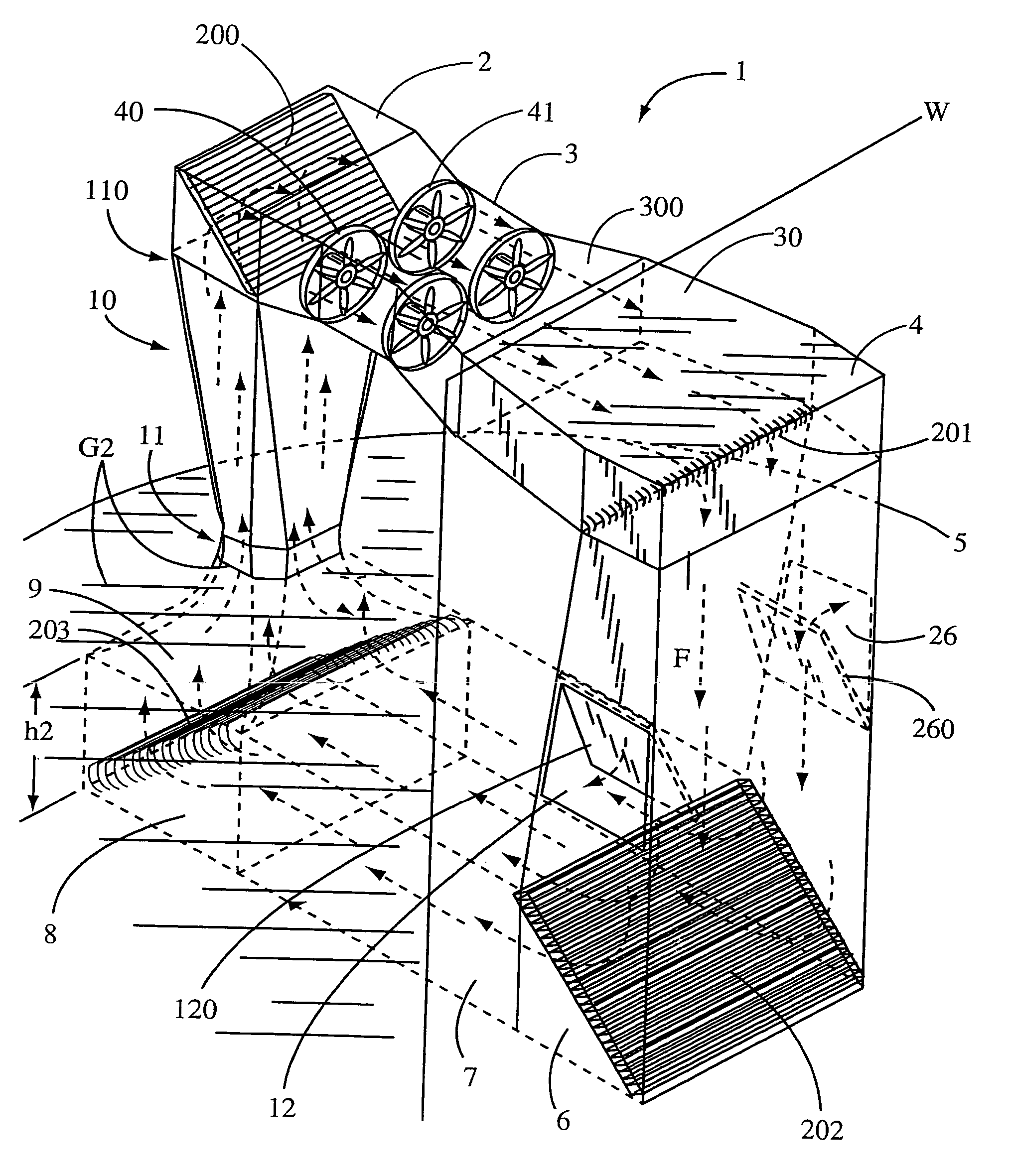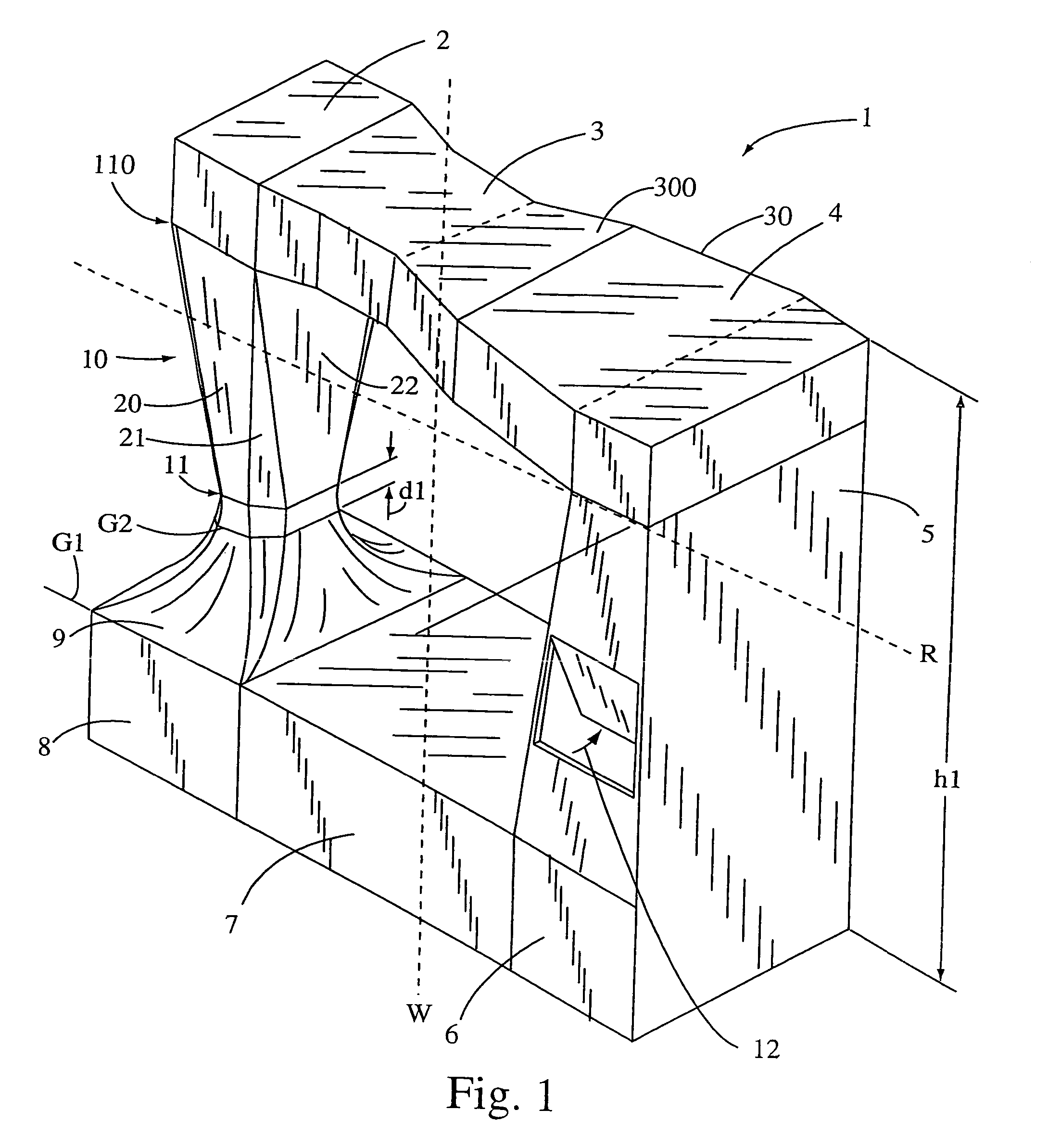Recirculating vertical wind tunnel skydiving simulator
a vertical wind tunnel and simulator technology, applied in emergency equipment, instruments, transportation and packaging, etc., can solve the problems of increasing the power required to achieve any given speed, affecting and most or all of the role poorly, so as to reduce the flow area and reduce the flow area without degrading the quality of the flow
- Summary
- Abstract
- Description
- Claims
- Application Information
AI Technical Summary
Benefits of technology
Problems solved by technology
Method used
Image
Examples
Embodiment Construction
[0092]Referring first to FIG. 1 a single return simulator 1 is shown, wherein height L1 is preferably in the range of about 50–120 feet. Some installations may bury all components below a ground level of either G1 or G2. The flight chamber 10 may be made entirely or partially with transparent panels. If ground level is at G2, then an opaque pedestal-type image formed in area d1 which may be about seven feet high. This embodiment in a mall creates an eye-catching, live action human flight studio in the flight chamber 10. This design attracts new “fliers” who pay to experience simulated skydiving in flight chamber 10. Dotted line R represents a roof, wherein components above R can be roof-mounted to reduce noise. Dotted line W represents a wall, wherein components beyond the wall W away from the flight chamber 10 could be isolated from the flight chamber to reduce noise near the flight chamber 10.
[0093]Most prior art flight chambers provide for parallel walls in the flight chamber so ...
PUM
 Login to View More
Login to View More Abstract
Description
Claims
Application Information
 Login to View More
Login to View More - R&D
- Intellectual Property
- Life Sciences
- Materials
- Tech Scout
- Unparalleled Data Quality
- Higher Quality Content
- 60% Fewer Hallucinations
Browse by: Latest US Patents, China's latest patents, Technical Efficacy Thesaurus, Application Domain, Technology Topic, Popular Technical Reports.
© 2025 PatSnap. All rights reserved.Legal|Privacy policy|Modern Slavery Act Transparency Statement|Sitemap|About US| Contact US: help@patsnap.com



